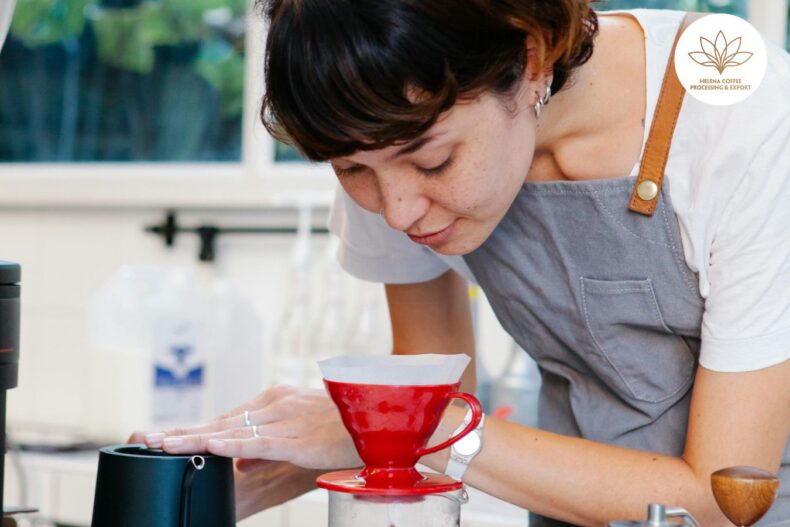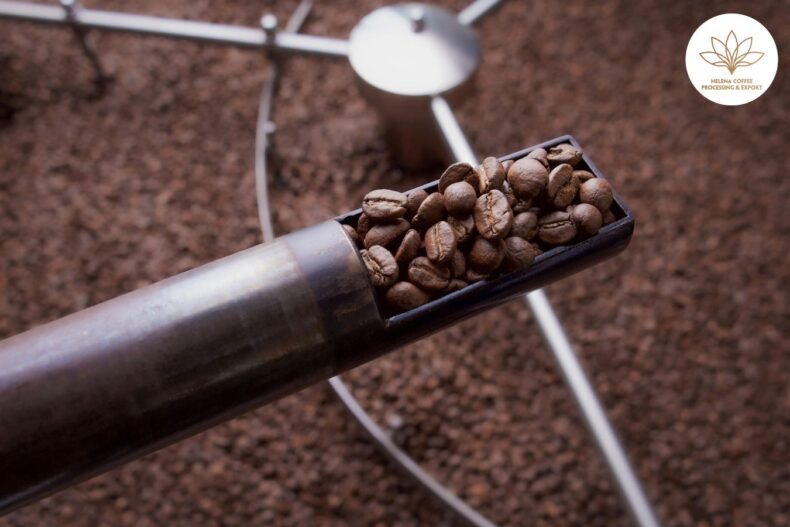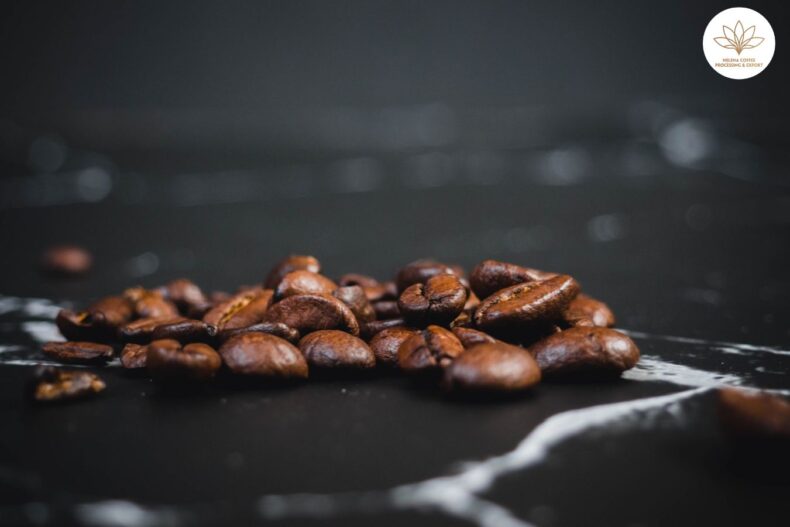
Technical Specifications for Exporting Green Coffee Beans: In the competitive global coffee market, understanding and adhering to the technical specifications for exporting green coffee beans is crucial for coffee producers and traders. These specifications ensure that the exported coffee beans meet the quality standards expected by buyers worldwide, maintaining the reputation of coffee-producing countries and facilitating smooth international trade.
This article will provide an overview of the essential technical specifications for exporting green coffee beans, which cover aspects such as bean size, moisture content, defects, and packaging requirements. By following these guidelines, exporters can guarantee that their green coffee beans meet the expectations of their international clients and promote a thriving coffee industry.
Common Technical Specifications for Exporting Green Coffee Beans
Adhering to specific technical specifications is essential when exporting green coffee beans to ensure consistent quality and meet international buyer requirements. Here are some standard technical specifications for exporting green coffee beans:
- Bean Size: Green coffee beans are typically classified by size, measured using a series of screens with different-sized holes. Standard classifications include screen sizes 15, 16, 17, and 18. Larger beans are generally considered to be of higher quality, although this can vary depending on the specific coffee variety and buyer preferences.
- Moisture Content: Proper moisture content is crucial for preserving bean quality during storage and ensuring optimal roasting results. The ideal moisture content for green coffee beans is typically between 9% and 12%.
- Defects: Green coffee beans should have minimal defects to ensure high quality and taste. Defects can include damaged or broken beans, insect damage, mold, sour or fermented beans, and foreign matter. Beans with fewer defects are considered to be of higher quality.
- Purity: Green coffee beans should be free from foreign materials, such as stones, sticks, and other debris. Purity is essential for maintaining the quality and safety of the final roasted coffee.
- Uniformity: Green coffee beans should have a consistent color, size, and shape. Uniformity is crucial for achieving even roasting and a compatible final product.
- Odor: Green coffee beans should be free from any off-odors, such as moldy, sour, or musty smells, which can negatively affect the flavor of the roasted coffee.
- Packaging: Green coffee beans should be packaged to protect them from moisture, contamination, and damage during transport. Common packaging materials include jute, sisal, or multi-layered paper bags with a moisture barrier. The choice of packaging material may depend on the destination country’s requirements and buyer preferences.
- Certifications and Quality Standards: Depending on the destination country and buyer requirements, specific certifications or quality standards may be required for exporting green coffee beans. Some buyers may require credentials such as Fair Trade, Organic, or Rainforest Alliance, which verify the coffee’s sustainability and ethical production practices. Exporters need to research and adhere to the specific requirements of their target market.
By meeting these standard technical specifications, exporters can ensure that their green coffee beans are of high quality and meet the expectations of international buyers, facilitating smooth trade and maintaining a positive reputation for the coffee-producing country.
Dry-processed Robusta green coffee
1) Standard for dry-processed Robusta green coffee, grade 1, 18.
(Robusta coffee grade 1 on-screen No. 18)
- Humidity (Humidity): up to 12.5%
- Black beans and spoiled beans: up to 2%
- Foreign matter: up to 0.5%
- Other coffee beans: up to 0.5%
- Minimum 90% per sieve (>90% on the number of sieves): 18 (7.1mm)
- Packing: 60kg in a whole bag
- Standard export (19.2 tons/container)

2) Standard for dry-processed Robusta coffee beans Type 1, sieve 16
(Robusta coffee grade 1 on-screen No. 16)
- Humidity: up to 12.5%
- The ratio of black and broken seeds: up to 2%
- The concentration of impurities: up to 0.5%
- Odds: up to 0.5%
- Min 90% on sieve: 16 (6.3mm)
- Packing: 60kg in a whole bag
- Standard export (19.2 tons/container)
3) Standard of coffee beans with dry processing Type 2, sieve 13
(Robusta coffee grade 2 on-screen No. 13)
- Humidity: up to 13%
- The ratio of black and broken seeds: up to 5%
- The concentration of impurities: up to 1%
- Odds: up to 1%
- Min 90% on sieve: 13 (5.0mm)
- Packing: 60kg in a full bag
- Standard export (19.2 tons/container or 21.6 tons/blown container)
Wet-processed Robusta green coffee standard
1) Wet-processed Robusta green coffee standard, grade 1, 18 sieves.
(Coffee with rinse grade 1 on-screen number 18)
- Humidity: up to 12.5%
- Black & Broken (Black & Broken): up to 1%
- Foreign matter: up to 0.2%
- Other coffee beans: up to 0.2%
- Minimum 90% on screen (> 90% on the number of screens): 18 (7.1mm)
- Packing: 60kg in a whole bag
- Standard export (18 tons/container)

2) Standard wet-processed Robusta green coffee, Grade 1, 16. sieve
(Class 1 washed coffee on display number 16)
- Humidity: up to 12.5%
- Black seed breakage rate: up to 1%
- The concentration of impurities: up to 0.2%
- Percentage of foreign particles: up to 0.2%
- Min 90% on sieve: 16 (6.3mm)
- Packing: 60kg in a whole bag
- Standard export (18 tons/container)
3) Standard for wet-processed Robusta green coffee, grade 2, 13. sieve
(Coffee with rinsing type 2 on screen 13)
- Humidity: up to 12.5%
- Black seed breakage rate: up to 2%
- The concentration of impurities: up to 0.3%
- Percentage of foreign particles: up to 0.5%
- Min 90% on sieve: 13 (5.0mm)
- Packing: 60kg in a full bag
- Standard export (18 tons/container)
4) SPECIAL standard wet-processed Robusta green coffee, TYPE 1, Sieve 16, Sieve 18
(Special type 1 washed coffee on sieves No. 16, No. 18)
- Humidity: up to 12.5%
- Black particle percentage: up to 0%
- A portion of seeds damaged: up to 0.2%
- The concentration of impurities: up to 0.1%
- Stick and kick ratio: 0.02% max.
- Minimum 90% on sieve: 18 (7.1mm), sieve 16 (6.3mm)
- Packing: 60kg in a whole bag
- Standard export (18 tons/container)

Conclusion
The previous specifications for wet and dry processed green coffee are provided for informational purposes only and are not exhaustive. We can use the factors listed above to discover the best coffee.
And there are different criteria and requirements for each country, each order, and each customer at other times.
FAQs
- What are green coffee beans?
Green coffee beans are the raw, unroasted seeds of the Coffea plant. They are typically processed and roasted before being ground and brewed into coffee. Green coffee beans are traded worldwide and form the basis for the global coffee industry.
- Why are technical specifications necessary for exporting green coffee beans?
Technical specifications ensure that exported green coffee beans meet the quality standards buyers expect worldwide. Adhering to these specifications helps maintain the reputation of coffee-producing countries, facilitates international trade, and ensures customer satisfaction.
- What factors are considered in the technical specifications for green coffee beans?
Technical specifications for green coffee beans typically include bean size, moisture content, defects, and packaging requirements. These factors help determine the quality, consistency, and overall appeal of green coffee beans in the global market.
- How is bean size measured and classified?
Bean size is measured using a series of screens with different-sized holes. The beans are classified based on the screen size they pass through or are retained by. More giant beans are generally considered higher quality, although this can vary depending on the specific coffee variety and buyer preferences.
- What is the ideal moisture content for green coffee beans?
The ideal moisture content for green coffee beans is typically between 9% and 12%. Proper moisture content is crucial for maintaining bean quality during storage and ensuring optimal roasting results.
- What are considered defects in green coffee beans?
Defects in green coffee beans can include damaged or broken beans, insect damage, mold, sour or fermented beans, and foreign matter. The defects can affect the final roasted coffee’s quality, taste, and overall appeal.
- How should green coffee beans be packaged for export?
Green coffee beans should be packaged to protect them from moisture, contamination, and damage during transport. Common packaging materials include jute, sisal, or multi-layered paper bags with a moisture barrier. The choice of packaging material may depend on the destination country’s requirements and buyer preferences.
- Are there any certifications or quality standards required for exporting green coffee beans?
Certifications and quality standards for green coffee beans can vary depending on the destination country and buyer requirements. Some buyers may require credentials such as Fair Trade, Organic, or Rainforest Alliance, which verify the coffee’s sustainability and ethical production practices. Exporters need to research and adhere to the specific requirements of their target market.


